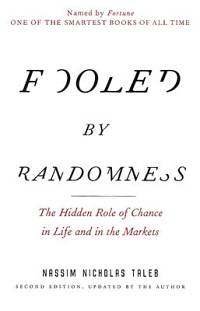We know intuitively, anecdotally and through scientific study that aggressive behavior can be transmitted to others through imitation. The famous Bobo doll experiment devised by researchers at Stanford University in the early 1960s, and numerous precursors, showed that subjects given an opportunity to observe aggressive models later reproduced a good deal of physical and verbal aggression substantially identical with that of the model. In these studies the model was usually someone with a higher social status or with greater authority (e.g., an adult) than the observer (e.g., a child).
Recent updates to these studies now show that low-intensity behaviors such as rudeness can be as equally contagious as more intense behaviors like violence. Fascinatingly, the contagion seems to work equally well even if the model and observer are peers.
So, keep this in mind: watching rude behaviors leads us to be rude to others.
From Scientific American:
Flu season is nearly upon us, and in an effort to limit contagion and spare ourselves misery, many of us will get vaccinated. The work of Jonas Salk and Thomas Francis has helped restrict the spread of the nasty bug for generations, and the influenza vaccine is credited with saving tens of thousands of lives. But before the vaccine could be developed, scientists first had to identify the cause of influenza — and, importantly, recognize that it was contagious.
New research by Trevor Foulk, Andrew Woolum, and Amir Erez at the University of Florida takes that same first step in identifying a different kind of contagious menace: rudeness. In a series of studies, Foulk and colleagues demonstrate that being the target of rude behavior, or even simply witnessing rude behavior, induces rudeness. People exposed to rude behavior tend to have concepts associated with rudeness activated in their minds, and consequently may interpret ambiguous but benign behaviors as rude. More significantly, they themselves are more likely to behave rudely toward others, and to evoke hostility, negative affect, and even revenge from others.
The finding that negative behavior can beget negative behavior is not exactly new, as researchers demonstrated decades ago that individuals learn vicariously and will repeat destructive actions. In the now infamous Bobo doll experiment, for example, children who watched an adult strike a Bobo doll with a mallet or yell at it were themselves abusive toward the doll. Similarly, supervisors who believe they are mistreated by managers tend to pass on this mistreatment to their employees.
Previous work on the negative contagion effect, however, has focused primarily on high-intensity behaviors like hitting or abusive supervision that are (thankfully) relatively infrequent in everyday life. In addition, in most previous studies the destructive behavior was modeled by someone with a higher status than the observer. These extreme negative behaviors may thus get repeated because (a) they are quite salient and (b) the observer is consciously and intentionally trying to emulate the behavior of someone with an elevated social status.
…
To examine whether this sensitivity impacts social behavior, Foulk’s team conducted another study in which participants were asked to play the part of an employee at a local bookstore. Participants first observed a video showing either a polite or a rude interaction among coworkers. They were then asked to respond to an email from a customer. The email was either neutral (e.g., “I am writing to check on an order I placed a few weeks ago.”), highly aggressive (e.g., “I guess you or one of your incompetent staff must have lost my order.”), or moderately rude (I’m really surprised by this as EVERYBODY said you guys give really good customer service???).
Foulk and colleagues again found that prior exposure to rude behavior creates a specific sensitivity to rudeness. Notably, the type of video participants observed did not affect their responses to the neutral or aggressive emails; instead, the nature of those emails drove the response. That is, all participants were more likely to send a hostile response to the aggressive email than to neutral email, regardless of whether they had previously observed a polite or rude employee interaction. However, the type of video participants observed early in the study did affect their interpretation of and response to the rude email. Those who had seen the polite video adopted a benign interpretation of the moderately rude email and delivered a neutral response, while those who had seen the rude video adopted a malevolent interpretation and delivered a hostile response. Thus, observing rude behaviors, even those committed by coworkers or peers, resulted in greater sensitivity and heightened response to rudeness.
Read the entire article here.


 Some online videos and stories are seen by tens or hundreds of millions, yet others never see the light of day. Advertisers and reality star wannabes search daily for the secret sauce that determines the huge success of one internet meme over many others. However, much to the frustration of the many agents to the “next big thing”, several fascinating new studies point at nothing more than simple randomness.
Some online videos and stories are seen by tens or hundreds of millions, yet others never see the light of day. Advertisers and reality star wannabes search daily for the secret sauce that determines the huge success of one internet meme over many others. However, much to the frustration of the many agents to the “next big thing”, several fascinating new studies point at nothing more than simple randomness.